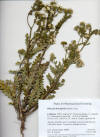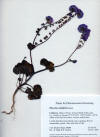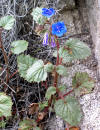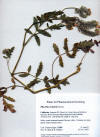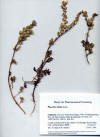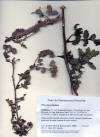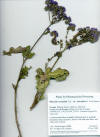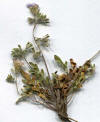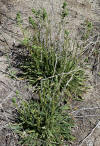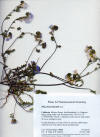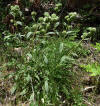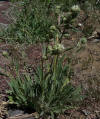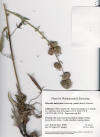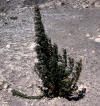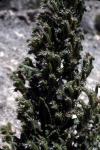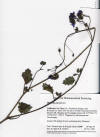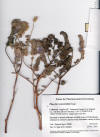|
Phacelia brachyloba |
|
Phacelia calthifolia |
|
|
Phacelia calthifolia
|
Phacelia campanularia
|
Phacelia cicutaria |
|
|
Phacelia cicutaria
|
Phacelia
ciliata |
 Phacelia
ciliata |
Phacelia
ciliata
|
|
Phacelia crenulata
|
Phacelia crenulata
|
Phacelia crenulata
|
|
|
Phacelia crenulata
|
Phacelia curvipes
|
 Phacelia distans |
|
|
Phacelia distans
|
Phacelia douglasii
|
Phacelia douglasii Kern Co., CA. CNPS Chapter Field Trip, Tejon Ranch, May 2010.
Exotic grassland
|
|
|
Phacelia douglasii |
  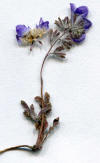  Phacelia sp. Kern Co., CA. Cattani Ranch, May 2010.
|
Phacelia egena Tehachapi Mts., Kern Co.
http://www.tropicos.org/Name/16200137
|
|
|
Phacelia
sp. nr. orogenes
|
Phacelia egena
|
Phacelia exilis
|
|
|
Phacelia fremontii |
Phacelia fremontii
|
Phacelia fremontii
|
|
|
Phacelia hastata
|
Phacelia hastata var. compacta Tehachapi Mts., Kern Co.
|
Phacelia humilus , |
|
|
Phacelia imbricata |
Phacelia imbricata
|
Phacelia imbricata
ssp. ? |
|
|
Phacelia imbricata ssp.
patula
|
Phacelia
cf. imbricata
|
Phacelia imbricata |
|
|
Phacelia nashiana Western Sierra Nevada
|
Phacelia palmeri
|
Phacelia parryi
|
|
|
Phacelia ramosissima
|
Phacelia ramosissima |
|
|
Phacelia tanacetifolia
|
Phacelia tanacetifolia
|
Phacelia tanacetifolia |
|
Phacelia tanacetifolia
|
Phacelia tanacetifolia
|
||
|
Phacelia vallis-mortae
|
Phacelia vallis-mortae
|
||
|
Trees and Shrubs of Kern County (Jan 2013, Feb 2014) Phacelia. Mostly herbs, usually with basal pinnately lobed to divided leaves, or if not divided then leaves long tapered or on long petioles; flowers numerous and often crowded terminally along one side of circinate (caterpillar-like) floriferous shoots, occasionally several or solitary; calyx enlarging in fruit, or some lobes larger than others; corolla white, blue, purple, or yellow, with a pair of scales at base of filaments in most species, often shedding, funnelform to bell shaped; fruit a loculicidal capsule with deeply intruded placentae. Seeds numbering 1–4, or 5–30, or more; surface corrugated, pitted, bumpy or ridged. >180 species and varieties. Eight species used medicinally by native American Indians (Moerman). These include P. californica root for fevers, colds, coughs, and leaves as dermatological aid, root or plant of P. crenulata as a veterinarian aid, or the root for human swellings, P. hastata plant in a decoction for menstruation, P. heterophylla as a dried poultice for wounds, P. linearis in a decoction for an unspecified remedy, P. neomexicana powdered root in water for treating rashes, P. purshii plant poultice for swollen joints, P. ramosissima roots as an emetic, gastrointestinal aid, or for bad stomach, and for treating gonorrhea. Author's contact with P. ixodes, P. calthifoia, and P. campanularia caused severe rash and swelling requiring treatment by physician. Sixty nine extracts screened by the NCI prior to 1978, none active. Species taxonomy not clear. More study needed in Kern County on field characteristics of the perennial species group as well as annual species. The following key is tentative for subshrub species in Kern County. Key to Species of Phacelia
1.
Leaves pinnately divided into ± equal lobes or leaflets; plants usually
1.
Leaves entire or blades often lobed or divided into shorter lateral
lobes
2. Plants rhizomatous (or stoloniferous) with multiple separate leaf rosettes.......................... 3 2. Plants with leaf rosettes tightly clumped..... ........................................................................ 4 .
3.
Basal leaves appearing simple or with few small lateral lobes; terminal
3.
Basal leaves divided, triangular in outline, terminal lobe with
indented
4.
Basal leaves appearing simple or pinnately divided with a long narrow
4.
Basal leaves pinnately divided with conspicuous lateral lobes below
Phacelia egena (Phacelia magellanica forma egena Brand 1912) Greene ex J. T. Howell 1943. Kaweah River Phacelia. Rock Phacelia. Stems mostly herbaceous from a thick root base, ascending to erect, reddish, to 60 cm; stem with spreading hairs; leaves densely crowded near base; pinnately lobed or divided, the terminal lobe or leaflet usually much larger, ~ twice as large as lateral lobes, ± elliptical, soft hairy on the blade, 7–11 (-25) cm, with lateral veins strongly ascending and impressed, and with parallel cross (tertiary) veins, becoming fewer and less divided or entire further up the stem: flowers Apr–Jul, white to cream turning brown in age, generally densely crowded along one side of short circinate (caterpillar-like) shoots; pedicels relatively short, 0.5–4 mm; calyx lobes linear to wider near apex, or narrowly elliptic, or mostly sword-shaped and slightly narrowed to base, with white spreading hairs, 4–6 mm, 8–12 mm in fruit; corolla bell-shaped, 5–9 mm; styles well exserted, 9–15 mm. Capsule ovoid, ± 3 mm, stiff-hairy; seeds 1 or 2, in vertical rows, 2.5–3 mm long, pitted, brownish. Banks, flats, chaparral, foothill woodlands below 8,000 ft., mostly Inner Coast Ranges to Transverse Ranges, and Western Sierra Nevada. Type from Kaweah River, Tulare Co. Kern Co.—“Occasional but widespread in many associations, from the Upper Sonoran grassland in the Temblor Range to the highest elevations of th mountains, having the greatest ecological range of any our phacelias. It usually grows around dry sunny outcrops but is occasional on open gravelly slopes in the Temblor and San Emigdio ranges” (Twisselmann); 451–2134 m (CCH, 48 records). Phacelia egena has been distinguished from P. imbricata by whether or the calyx lobes overlap in fruit, P. imbricata, or not, P. egenea (Patterson, Garrison & Hansen in JM2; Wilken, Halse, Patterson in JM1; Munz 1959; Abrams 1951). There appears to be gradation of wide to narrow calyx lobes judging from images on CalPhotos and other web sites, whereas the representative images in JM2 for each species show a sharp difference. The calyx lobes also appear to vary in size in the same flower; thus, some lobes may overlap more than others in fruit. The type specimen—shown in the link in one of the images above to the webpage—appears similar to P. imbricata. The species has also been included by Abrams under the Coast Range P. californica, which differs in having blue flowers. Phacelia hastata Douglas ex Lehmann 1830 var. compacta (Phacelia magellanica forma compacta Brand 1912) Cronquist 1959 [Includes P. frigida Greene 1899]. Compact Phacelia. Similar to preceding, typical variety mostly perennial with solitary stems, var. compacta branching at base or rhizomatous or stonloniferous, or leaves densely clumped from a thick taproot, floral shoots to 50 (-60) cm; basal leaves narrowly to broadly elliptic, petiolate, progressively reduced upwards with shorter petioles; flowers in short caterpillar-like clusters, white to lavender, 4–7 mm; filaments exserted; ovules 4 but only 1 or 2 maturing. Sierra Nevada, Cascades, northwestern Nevada, to Oregon. Type from Douglas County, NV. CCH: reported from Tulare Co., Greenhorn Mts., Deer Creek drainage just S of Lion Ridge (along small streamlet and marble-like outcrops in a mixed conifer forest, Shevock). Kern Co.: Tehachapi Mts., Tejon Ranch Conservancy, is tentatively assigned to this species based on similar plants shown in images from Oregon, and also for some in CalPhotos. Distinguished here by the separate leafy rosettes, not tightly clumped together in contrast to P. egena. Distinguished in JM2 and other floras by the silvery color (vs. grayish green or green color, e.g., P. mutabilis Greene 1896) and by the “dissected leaves” vs. “compound leaves,” which in many plants may be partly dissected and partly compound. Reported by Munz & Keck (1959) from Kern Co. (under P. frigida), but not in Kern Co. according to Twisselmann with reference to Munz 15,273 (RSA), stating also that it is “a subalpine phacelia that reaches its southern limit at Olancha Peak.” Phacelia hydrophylloides Torrey ex A. Gray 1868. Waterleaf Phacelia. Plants soft hairy with simple or branched stems and ascending floral shoots 10–30 cm, arising from a woody root; basal leaves 3–5 cm long, 1.5 to 3 cm wide, abruptly tapered to petiole, coarsely toothed or lobed and/or with pair of lateral lobes and larger triangular terminal lobe; flowers Jul–Aug, pale blue to white, in globose head-like cluster, calyx lobes 3–4 mm; corolla bell shaped, 5–6 mm, shedding; stamens long exerted; style exserted; seeds 3–8, irregularly reticulate, dark brown. Infrequent, open dry forests, Sierra Nevada, 5,000–10,000 ft, Oregon, Nevada, California, Sierra Nevada, to near the Kern County line. Phacelia imbricata Greene 1893 ssp. imbricata (Includes Phacelia stimulans Eastwood 1902]. Imbricate Phacelia. Stems mostly herbaceous from a thick woody base, the flowering stems erect to 1 m or more, with short hairs; leaves crowded near base; pinnately dissected or divided; terminal lobe or leaflet usually much larger, ~ twice as large as lateral lobes, the lobes or leaflets asymmetrical, ± narrowly elliptical or sword-shaped and long tapered, grayish short hairy, 5–12 (-25) cm, with lateral veins strongly ascending and impressed, and with parallel cross (tertiary) veins, becoming fewer and less divided or entire further up the stem: flowers Apr–Jul, white to lavender, generally densely crowded along one side of short circinate (caterpillar-like), strongly coiled shoots; calyx lobes triangular to narrowly elliptic, narrowed to apex, with white spreading hairs, especially below mid region, 3–6 mm, 5–10 mm in fruit; corolla bell-shaped, 4-7 mm,; styles slightly exserted, 9-13 mm. Fruit: capsule, ± 3 mm, ovoid, stiff-hairy; Seeds 1-2, 2.5-3 mm, pitted in vertical rows, brownish. Banks, flats, chaparral, foothill woodlands below 8,000 ft., mostly Inner Coast Ranges to Transverse Ranges, and Western Sierra Nevada. Type from wooded hills of Napa and Sonoma cos., California. Kern Co—CCH (29 records, 6 identified to subspecies): San Emigdio Range; Mt. Pinos; Frazier Park; Wind Wolves; Tehachapi Mts.; Sierra Nevada, Greenhorn Range; Kern River Canyon, Piute Mts.; Sand Canyon, 518–1,982 m. In Twisselmann as Phacelia stimulans and “P. imbricata in part”: “Scarce from the pinyon and Douglas oak woodlands to the yellow pine forest in the Tehachapi Mountains and the Mt. Pinos region, usually growing in sunny dry rocky or gravelly places;” the type for P. stimulans from Kings River Canyon, not far from the swampy medow near which campers stop on the way to Bubb's Creek . Description of P. stimulans by Eastwood in her flora of the South Fork of Kings River from Millwood to the head waters of Bubbs Creek (Eastwood 1902) suggests the species differs by having a net-veined calyx that is shorter than corolla, and by the corolla becoming united and persistent in fruit. In her original description (Proc. Calif. Sci., 1902), it was noted to have stinging hairs and “allied” to P. circinata (Aldea circinata Willdenow 1813) Jacquin 1816, while she also mentioned that it was similar to P. nemoralis Greene 1887. A key character feature in Abrams distinguished P. imbricata by "corolla lobes conspicuously incurved and embracing the filaments and style after anthesis.” Phacelia mutabilis, which has similar leaves, differs in being a short-lived perennial herb with one to several stems arising from less well-developed rosettes of basal leaves, and by the more leafy flower stems; it is reported from Shirley Meadows, between Lake Isabella and Kernville, and from Tehachapi Pass. Ssp patula (Phacelia magellanica Coville 1893 f. patula Brand 1829) Heckard 1960 [Phacelia californica Cham. 1829 var. patula (Brand) Jepson 1925]. Distinguished by fewer leaf segments, 3–7, compared to 7–15 in ssp. imbricata, and by the absence of glandular hairs (JM1, JM2). Described by Jepson (1943) “stems few to several from the root-crown, prostrate or ascending, nearly naked, 5–13 inches high, the leaves mostly in a basal tuft; leaf blades ¾ to 2 inches long, ovate to oblong-lanceolate, entire or with 1 to 3 pairs of supplementary lobes below, or deeply pinnatifid; racemes rather short, borne in a mostly compact or subcapitate panicle, sometimes in an open panicle; calyx-lobes narrowly obovate to lanceolate or linear lanceolate; corolla white.” “The differences between var. patula and var. frigida are extremely slight, some might even say trivial.” Range given by Jepson (1943): “Mountain slopes or dry flats, in open forest, 5000 to 9200 feet: Sierra Nevada in Kern Co.; Mt. Pinos region, northern Ventura Co.; San Gabriel, San Jacinto and Cuyamaca Mountains. June-July. Type from Stonewell Mine, Cuyamaca Mountains, San Diego County. It might be noted that Jepson, who initially treated this as a variety of P. californica [A Manual of the Flowering Plants of California 820, 1925], later regarded it as one of numerous “forms” (treated as varieties) of a widely distributed P. magellanica, a South American species. [A Flora of California 3(2): 248–249, 1943]. Phacelia californica, which does not occur in Kern County, is distinguished by its blue flower color, in contrast to white to cream flowers of P. imbricata (Patterson, Garrison & Hansen in JM2). Phacelia ramosissima Douglas & Lehmann 1830. Branching Phacelia. Subshrub from a woody taproot and wide spreading branches above, flat-topped to hemispherical, often wider than tall; stems brittle, often clambering, densely hairy; leaves pinnately divided, to 20 cm; lateral leaflets alternate to opposite, up to 6 pairs, with triangular lobes, which are coarsely toothed, terminal leaflet not larger than lateral leaflets, or contiguous in part with uppermost lateral leaflets; flowers pale lavender to white, funnelform to bell-shaped; calyx lobes narrow or somewhat spoon shaped, increasingly wider towards apex, 4–6 mm; corolla 6–12 mm; ovules 4, seeds 2 or 4, pitted and ventrally ridged. Widely distributed in the Pacific Northwest to Arizona. Type from the “plains of the Columbia, near Priest’s Rapid and at the Stony Island.” Six varieties distinguished in JM1 (Wilken, Halse & Patterson), no varieties distinguished in JM2 (Patterson, Garrison & Hansen). Two or three varieties previously identified in Kern Co. CCH records reported vars. latifolia (P. tanacetifolia Bentham 1835 var. latifolia Torrey 1858) Cronquist 1984 (inflorescences with glandular hairs bulbous at base; Southern Sierra Nevada and Tehachapi Mts.), var. ramosissima (inflorescences glandular without bulbs at base; Southern Sierra Nevada and Tehachapi Mts.), and var. subglabra M. Peck 1928 (no glandular hair, only short hairs; Piute Mts.,); about 1/3 of the 69 CCH records not identified to variety. Twisselmann recognized only var. latifolia in Kern Co. (as P. ramosissima var. suffrutescens Parry in A. Gray 1886); var. subglabra considered a synonym of var. latifolia by Cronquist et al. (1984); 396–2254 m (CCH).
Berry C. Z., S. I. ShapiroI, R. W. Dahlen. 1962. Dermatitis venenata from Phacelia crenulata. Arch. Dermatol. 85: 737–739. Gilbert, C. J. dempcy, C. Ganong, R. Patterson, and G. Spicer. 2005. Phylogenetic relationships within Phacelia subgenus Phacelia (Hydrophyllaceae) inferred from nuclear rDNA ITS Sequence Data. Systematic Botany 30(3): 627–634. http://userwww.sfsu.edu/gs/spicer/pages/spicerpdf/gilbertetal05.pdf Ippen H. Contact allergy to Phacelia spp. (Hydrophyllaceae). 1990. Dermatol Clin. 1990 8(1): 67–71. “Six persons involved with cultivation trials of Phacelia spp. developed a contact allergy to certain plants of this species. Geranyl(hydro)quinone and related substances, including the geranylhydroquinone geroquinol (INN), which has been introduced as a radioprotective agent, are potent allergens and probably are more often the cause of allergic eczema than is apparent from the literature.” Reynolds G. W. and E. Rodriguez. 1981. Prenylated phenols that cause contact dermatitis from trichomes of Phacelia ixodes. Planta Med. 43(2): 187–93. “The principal phenolic constituents were isolated from the exudate of the glandular trichomes of Phacelia ixodes Kellogg (Hydrophyllaceae), a Mexican plant that causes allergic contact dermatitis. These are, in decreasing order of the amount in the trichomes: geranylhydroquinone (I), 3-geranyl-2,5-dihydroxyphenyl acetate (II), geranylbenzoquinone (III), 2-geranyl-6-hydroxy-4-methoxyphenyl acetate (IV), 2-geranyl-4-hydroxyphenyl acetate (V), 6-hydroxy-2-methyl-2-(4-methyl-3-pentenyl)-chromene (VI), and 6,7-dimethoxyapigenin. Compounds II, IV, and V are new natural products. Geranylbenzoquinone was the principal contact allergen in testing with guinea pigs.” Reynolds G., W. Epstein, D. Terry D and E. Rodriguez. 1980. A potent contact allergen of Phacelia (Hydrophyllaceae). Contact Dermatitis 6(4): 272–274. Tropicos.org. Missouri Botanical Garden. 22 Jan 2013 <http://www.tropicos.org/Name/16200137>
|
|||
